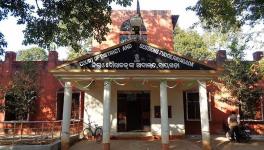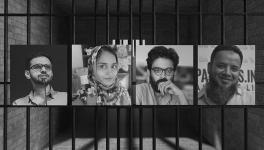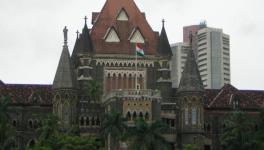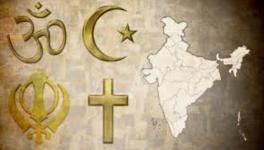Gyanvapi Mosque: Yet Another Headlong March into an Unknowable Past
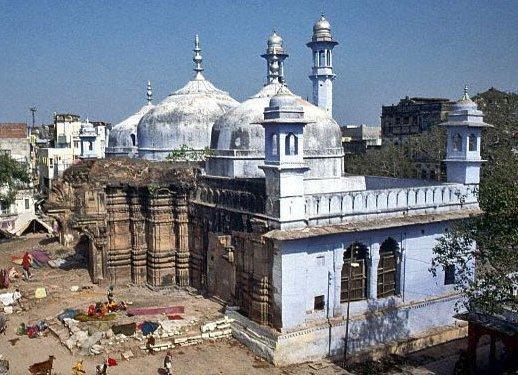
Some recent developments are both alarming and significant for Indian citizens. First, a District Court in Varanasi has directed the Archeological Survey of India (ASI) to conduct a study of the Gyanvapi mosque in Varanasi, Uttar Pradesh. Second, the Supreme Court is reportedly ready to reconsider the Places of Worship (Special Provisions) Act, 1991. According to this act, all worship sites have to maintain the status quo as during Independence. In brief, this law sought to foreclose all disputes over religious sites, except the Babri mosque in Ayodhya, by preserving their character. It means all pending disputes over worship sites would abate.
When the demolition of the Babri mosque was going on in December 1992, the war-cry of Hindutva footsoldiers was: “Ye to keval jhanki hai, Kashi-Mathura baki hain-- Babri is just the beginning, Kashi and Mathura are next.” The Babri dispute had dragged on for decades. Rath yatras and other religio-political campaigns fuelled violence, created hatred towards the Muslim minority, and widened the gulf between religious communities.
The basis of the Hindutva campaign around Babri was that at the “birthplace of Lord Rama” was a temple that Mughal ruler Babar “destroyed” to build a mosque. Though factually incorrect and unproven, these claims spread far and wide, particularly in the northern states. On the Gyanvapi Mosque in Varanasi, there is evidence of a temple broken to build the mosque is said to exist. So, the question arises, what is it that the ASI hopes to “study”? It seems that after Babar, the alleged destroyer of the temple at Ayodhya, the propaganda machine is now after Aurangzeb.
For a long time, Aurangzeb was labelled the cruellest, most anti-Hindu king, a destroyer of temples who spread Islam by force. What Aurangzeb did or did not do is no longer the point: the idea is to derive political mileage for majoritarian politics by raking up the long-dead ruler. The more people see Aurangzeb as a cruel temple-breaker, the more likely is it to forget that the greatest shehnai player, Ustad Bismillah Khan, devoted his immortal music to Hindu gods! The aim is to demonise the Muslim community as a whole and drive an even deeper wedge between communities.
For, it is a fact that not all Hindu kings were benign, nor epitomes of virtue. Nor were all Muslim kings evil, as the popular ‘historians’ love to claim these days. Emperor Akbar (reign 1556-I605 AD), the third Mughal dynasty and Babar’s grandson, initiated the Sulh-i-Kul, which means peace for all, and fashioned his Deen-e-Elahi from what he considered the best features of every religion.
A century after Akbar’s death, Dara Shukoh lost the battle of succession to his brother, Aurangzeb. Shukoh was a Sanskrit scholar and had the Upanishads translated into Persian. His Majma-ul-Bahrain (meeting of two rivers) compares India with a vast ocean that came into being when two great seas, Hinduism and Islam, met.
Aurangzeb was orthodox and close to the Ulamas. Yet, he did not destroy the Hindu temples as a policy. Historian Satish Chandra points out in his book, Medieval India (2017), that the Banaras Firmans issued by Aurangzeb to the Brahmans of Varanasi and Vrindavan permitted repairs of old Hindu temples. Aurangzeb did not want new temples to come up and had some destroyed, though not as many as some claim. His motives were usually political—to humiliate rival rulers or punish them for subversive activities.
The demolitions of Kashi Vishwanath in 1669 and Keshav Dev Temple in Mathura in 1670 were due to the perception in the court of Aurangzeb that politically subversive activities were taking place in them. There was growing political opposition to Aurangzeb at the time, from the Jats and the Marathas in particular. The destruction of temples was a way to punish and warn dissenters. He aimed to consolidate political power.
Maasir-i-Alamgiri by Saki Mustad Khan is a chronicle of life and events during Aurangzeb’s rule from 1658 to 1707. The writer, writing within an Islamic idiom, describes the demotion of the Kashi Vishwanath temple as a rare and impossible event. There is no firman of general destruction of temples by Aurangzeb.
At the same time, firmans indicating he gave grants to Hindu temples, Brahmans and Maths. The Guru Ramdas Temple in Dehradun and the Vaishnav Temple in Vrindavan are two instances. His donations to the Nath Panthi Jogis in Sarkar Nagaur, a grant of 100 “pakka bighas” of land to the Panth Bharati in Pargana Siwana in Rajasthan are recorded. Another famous temple that received a grant from Aurangzeb was the Mahakaleshwar temple in Ujjain.
There are also firmans where Aurangzeb asks officials not to interfere unduly in matters related to temples. His grant to the Umananda temple in Assam and donation of land to Bhagwant Gossain, a Hindu ascetic, are also historical records. In Chitrakoot, he donated a sizeable tract to Mahant Balak Das Nirvani to support the Balaji Temple. Jangambari in Varanasi, where Shaivites live, was patronised by Mughal rulers, and Aurangzeb continued the tradition.
The right-wing claims that Mughals destroyed tens of thousands of Hindu and Jaina temples, but archaeologist Richard Eaton has contradicted their version.
Aurangzeb was certainly more orthodox among his six predecessors and over one dozen successors who ruled Hindustan from the 1520s to 1857. However, he is also determinedly seen through the lens of communal historiography. There were multiple reasons for donations and patronage to temples and also for destroying some of them. Aurangzeb ruled for nearly 49 years, his empire spanning the largest land area ever.
The communal politics has reaped rich benefits by raking up Ayodhya, and Kashi seems to be next. How far can we keep picking up history as a tool to divide society? Interestingly, relics that emerged at the site of the razed mosque in Ayodhya are said to be of Hindu religious vintage. Closer scrutiny revealed they were Buddhist relics with carvings similar to the Ajanta and Ellora. British archaeologist Patrick Carnegi has said that the Kasauti pillars of Babri resemble the Buddhist pillars discovered in Varanasi and other places.
So, where do we go from here? The country needs to move forward to take care of its poor and deprived. India needs the Constitution, equality, and fraternity. The country needs to respect human rights and work for the material well-being of all.
Raking up history, which by its very nature is about versions and interpretations, is of no use. India needs to redefine which sites it considers holy: just religious sites or our education and health institutions. There is a need to keep the 1991 law intact and forget about raking up fresh disputes over matters from the far-off past.
The author is a social activist and commentator. The views are personal
Get the latest reports & analysis with people's perspective on Protests, movements & deep analytical videos, discussions of the current affairs in your Telegram app. Subscribe to NewsClick's Telegram channel & get Real-Time updates on stories, as they get published on our website.











